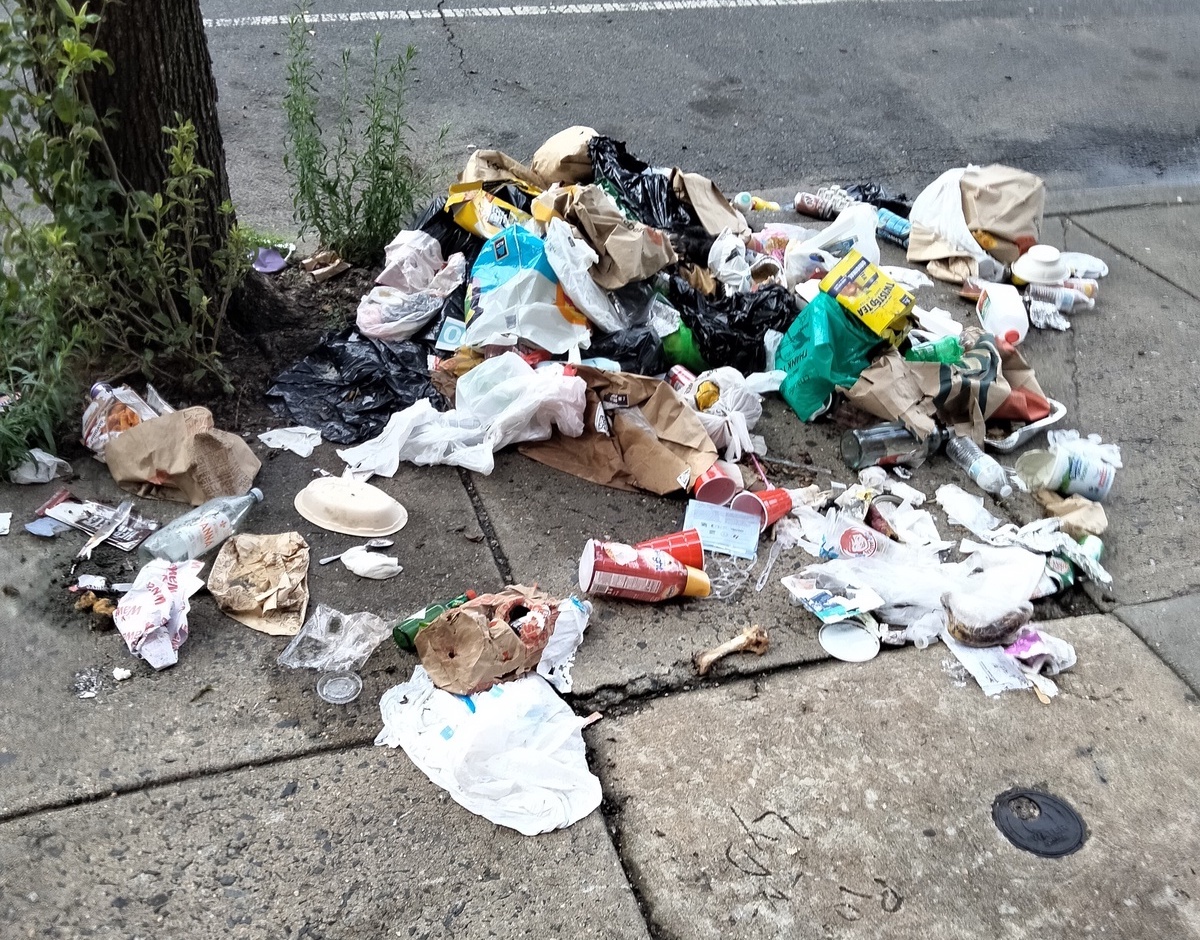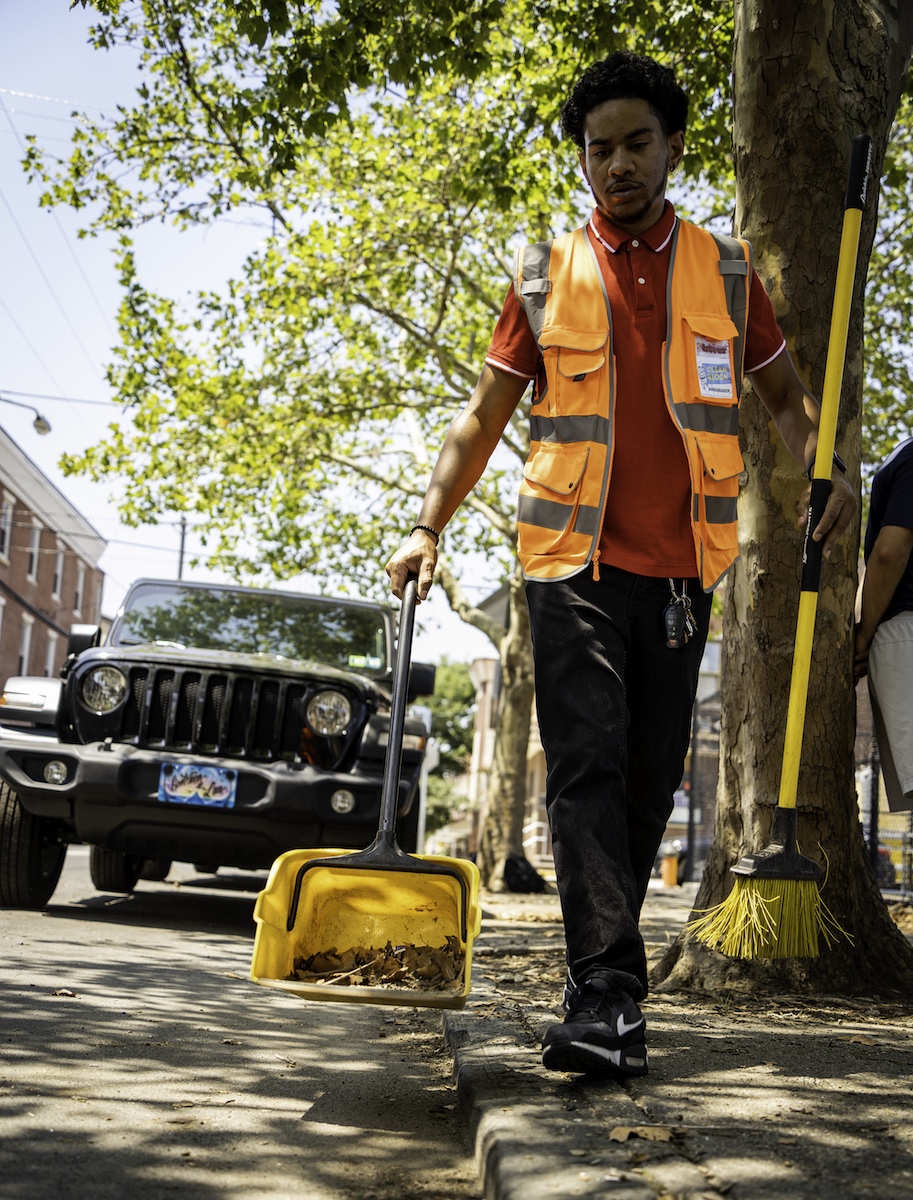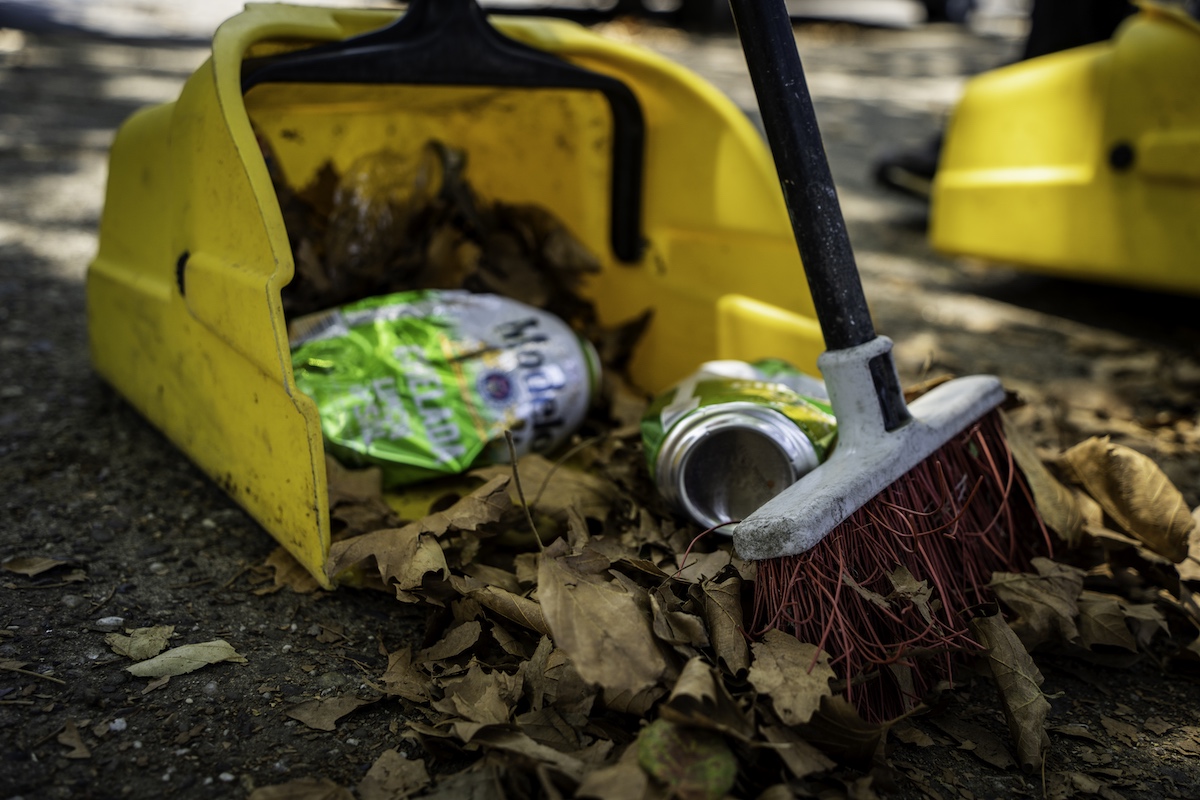You’re certainly not the only one who has. And a huge swath of city residents think that’s a problem: According to a recent survey from The Lenfest Institute for Journalism, sanitation, trash removal and cleanliness was the second most frequently mentioned issue that Philadelphia is facing, with 34% of respondents saying it was an important issue in their neighborhood. (First was crime and safety.)
The process for cleaning up Philly’s streets incorporated more technology than you might think.
For the Streets Department in the City of Philadelphia, technology is mainly used to maintain and track vehicles — including GPS for trash trucks and mechanical brooms — and processes, Sanitation Operations Administrator Faruq Scott told Technical.ly. But the department is always looking to incorporate new tech.
Michael Matela, IT manager for the Streets Department, said the department receives data constantly throughout each day about where the vehicles have been traveling, which is used to inform future assignments.
The Streets Department uses tech including GIS mapping and its own StreetSmartPHL platform to track its vehicles and processes.
Using Esri’s ArcGIS GeoEvent Server, “we sort of partnered with central IT to come up with this methodology for processing the point data and turning it into lines so that we can visualize that on a map as a line, as opposed to a bunch of dots,” Matela said.
There’s also StreetSmartPHL, a Phila.gov platform for Philadelphians to access updated information about the city’s streets, including street cleaning and trash pickup. Scott said this site offers transparency about which streets have been cleaned and when people need to move their vehicles; the street sweeper page refreshes every 15 minutes.
Currently, most of the City’s streets-related collaboration happens with commercial development corporations for street cleaning and trash pickup, specifically in business corridors. Outside of that, Scott said, the Streets Department partners with nonprofits that are funded by the Department of Commerce. He said his team is open to partnering with new organizations, as long as they are nonprofit.
If you look outside city government, though, there are tech businesses looking to address trash issues on their own, with a willingness to collaborate with the City and solve Philadelphia’s trash troubles. Here are two tech-enabled companies with a mission to make Philadelphia be a cleaner place.
Trashmitter
Jason Centeno’s mission to address the trash problem in Philadelphia started when he was a landlord for short-term rentals. He said he was struggling to find a reliable system to get the trash taken out without messing up a freshly cleaned unit. Storing trash was also an issue: He didn’t want it to sit in front of the house as an eyesore, but keeping it in a basement or alleyway attracted pests.
Centeno started paying a neighbor to take care of the trash, but he needed more consistency. He realized it would be easier if there were a platform to track when trash needed to be picked up, who picked it up and when they were paid.
This led to the development of Trashmitter, an “Uber for trash,” as Centeno described it. Users can enter their location, what kind of trash they have and how much there is into the app. Then, a sweeper who works for Trashmitter will come pick up the trash and get rid of it for you, either by taking it to the dump, tossing it in a trash truck or putting it in their own trash. There’s a two trash bag minimum and 10 bag maximum. Pickups cost $9 per bag.
“We’re leveraging what already exists out there which are the Uber/Lyft drivers,” Centeno said. “All the gig economy people generally have room in their trunk for this.”

Trashmitter’s biggest customer right now is short-term rental companies or vacation rental owners, according to the founder. He also wants to partner with other junk companies to see if they can pass off trash to workers who are already going to the dump.
The pilot program for the app ran for eight weeks this summer in Philadelphia, where Centeno said he lived for most of his life before recently relocating to Tampa.
Centeno’s trash cleanup dreams expand past a trash pickup service. He wants to eventually implement a program where people would earn cryptocurrency or “trash tokens” for picking up trash and litter. This currency would be kept on a credit card of sorts to be redeemed for other goods or services. He’d also love to turn this idea into a game to teach youth about keeping their environment clean.
As Centeno works toward this goal, he has been organizing community cleanup days as a way to test his ideas for incentivizing litter cleanup. These cleanups include partnerships with local businesses that donate prizes to attendees, and those who attend to help with the cleanups have the chance to win a prize. Look out for more details on the company’s website.
Glitter
Before the current iteration of trash cleanup app Glitter, founder Morgan Berman intended to partner with the Streets Department on an app called PhilaSweep. That partnership fell through, as detailed by Technical.ly in 2021.
But she pivoted the company to become a block cleaning service that employs cleaners and is paid for by neighbors on a city block, with services launching under the name Glitter that September. The company employs cleaners who use mobile-based technology to track their work, which includes sweeping trash from blocks around the city every week before trash pickup day. Philadelphians can access a map to find if their block is already covered; if not, neighbors can sign up their block and gather neighbors to pitch in to cover the cost. Glitter reports that it currently services almost 200 blocks around the city.
“We’ve really incorporated smart ecommerce integration, seamless signup process, good email marketing, so that a neighbor, just like when they want to order something to eat or get a ride somewhere, there’s simple apps for them to do that,” said Brandon Pousley, CEO of Glitter. “We’re kind of trying to design the equivalent of if that neighbor wants to solve a problem on their block or invest with their neighbors in a solution, we’re providing those ecommerce messaging and coordination pieces to that tech stack.”

Glitter cleans its blocks the day before trash pickup day because it’s easiest for their clients and for the city to pick up the trash bags the next day during their usual rounds. However, residents began complaining that when trash trucks come through a neighborhood, they create another mess of trash from knocking over bins, or trash flying out of the truck, which then sits for a full week until Glitter comes back to clean.
Berman said Glitter reached out to the Streets Department once again to see if they could collaborate on a solution, and the two agreed to do a pilot program last summer where Glitter would clean blocks after trash day and leave the trash bags in designated locations for the trash trucks to pick up.
“If we want to see change in the city and we want to see services being provided that are in demand by residents and businesses, we’ve got to figure it out together.”Brandon Pousley Glitter
The pilot was successful, Pousley said, covering five neighborhoods or 40 blocks of the city. He said it also led to some positive collaborations with sanitation crews to work out other trash cleanup issues, such as illegal dumping on vacant lots.
Then, Glitter received a letter on March 3 from the Streets Department stating that the department would be stopping the pilot program after the Streets’ union filed a grievance that the pilot was a breach of their contract with the City. Scott confirmed to Technical.ly that the department “had to cease and desist” because of the union action.
Following this sudden stop of services, “our takeaway is to not be driven by the politics of the moment or grievances that can be filed for reasons that are not transparent,” Pousley said. “So we’re now just doubling down on the lesson that we learned a year and a half ago, which was if we want to see change in the city and we want to see services being provided that are in demand by residents and businesses, we’ve got to figure it out together — meaning Glitter with neighbors,” not city government.

Moving forward, Pousley said the company is excited to expand onto new blocks, bring new neighbors into existing blocks and create more jobs for cleaners. They are looking to work with other organizations in the city such as civic associations, neighborhood associations and businesses to see how they can make a bigger impact. One such project expected to start this spring will examine the impact litter removal has on a community, especially regarding violence reduction, which Glitter is leading with nonprofit partners in Strawberry Mansion, Germantown and Mt. Airy.
Glitter is also interested in working with neighborhoods to see how they can implement trash removal solutions onto their blocks long term, especially with community organizations with low budgets run by part-time volunteers.
“We’re regularly working with them to better understand what is it that you’re dealing with in your neighborhood,” Pousley said. “What are ways that we can be a part of that solution, which includes everything from again, the paid model of consistent cleanups, but also things like, how do we lobby and even activate better infrastructure in your neighborhood? How do we work creatively for other types of solutions for greening of spaces or adding other infrastructure?”







